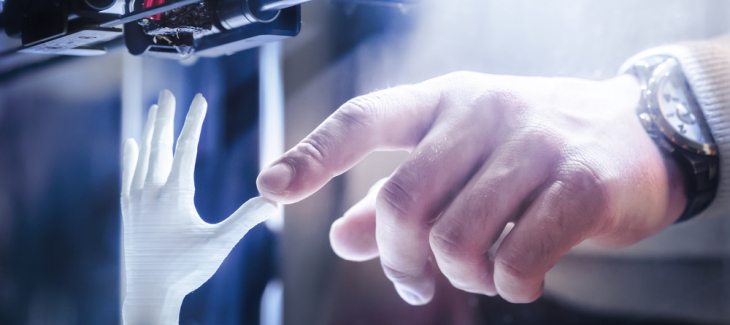- General
- Telehealth
- Career Trends
- Featured
- Legal
- News and Events
- Technology
- How To
- Procedures
- Training
- Allied Health Industry
- Allied Health Practitioners
- Employer News
- Candidate News
Recent Posts
Most Popular
Revolutionary 3D Printer Generates Bionic Skin

“Bionic Skin” could allow robots to gain never-before-achieved tactile sensation.
Researchers at the University of Minnesota built a one-of-a-kind 3D printer that can print stretchable, electronic fabric and can also print electronics directly on human skin. The printer can also print touch sensors directly on a model human hand.
Michael McAlpine, lead researcher on the project, said the stretchable fabric that mimics human skin could be used in countless ways in the future; from warfare to medicine to health monitoring in the form of wearables.
Prior to printing, the printing surface is scanned for contours and shape and mapped precisely. Because the printer can follow any curvature, researchers were able to successfully print a pressure sensor onto a mannequin’s hand.
The cutting-edge 3D printer is made up of four nozzles that print a layer of silicone, a layer of electrodes made of conducting ink, a spiral-shaped layer that acts as a pressure sensor, and a protective outer layer that simulates human epidermis and holds everything in place. The outer layer is ultimately deteriorated in the final steps of manufacturing.
The finished project was just 4-millimeters wide and took only minutes to complete.
In conventional 3D printing, the liquid plastic is too hot and too rigid to use on human skin. In the case of the new printers, all layers of the “ink” can set at room temperature, and they can be stretched up to three times their original size.
The bionic skin could allow robots to “feel their environments” which could improve their ability to perform delicate tasks like minimally invasive surgeries. The skin could also allow robots to walk and interact with their surroundings, and could give robots the capability to detect dangerous explosives or chemicals.
Researchers also interfaced a printed device with human skin and were thrilled to find that the device was sensitive enough to detect a human pulse in real time.
The project initially set out to extend the possibilities of 3D printing beyond the limited selection of hard plastics. While the researchers haven’t yet printed directly onto human fingers, they have successfully printed the sensory material on the curved surface of a model human hand.
Researchers say the best part of the development is the fact that the manufacturing is already complete, so the project is immediately ready for use.
Medics could print the parts necessary to patch up an injured soldier using a printer that could be carried in a backpack. Additionally, researchers expect that the development might allow them to return the touch sensation to burn victims and those with prosthetic limbs.
The next step in the research will involve semiconductor inks and printing on an actual human body.
The bionic capabilities of this printer are vast and sound like topics from a sci-fi movie. Imagine giving bionic functionality to humans, which allow them to operate beyond the limitations of biology.
Ultimately, researchers hope the technology will lead to a fusion of man and machine.








Comments